D-THREO-METHYLPHENIDATE HYDROCHLORIDE
- CAS NO.:19262-68-1
- Empirical Formula: C14H20ClNO2
- Molecular Weight: 269.77
- MDL number: MFCD04113185
- SAFETY DATA SHEET (SDS)
- Update Date: 2023-05-15 10:44:00
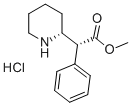
What is D-THREO-METHYLPHENIDATE HYDROCHLORIDE?
Description
Dexmethylphenidate, the pharmacologically effective enantiomer of d,l-methyl phenidate (Ritalin?) was developed as an improved treatment for attention deficit hyperactivity disorder (ADHD) in children. Dexmethylphenidate acts via the inhibition of reuptake of dopamine (by binding to dopamine transporter) and nor-adrenaline. It is thought to block dopamine and noradrenaline reuptake into the presynaptic neuron and increase neurotmnsmitter release into the extraneuronal space. Dexmethytphenidate, at half the usual dose of racemic methylphenidate, improved the symptoms of attention deficit hyperactivity disorder to a similar extent to methylphenidate in both home and school settings (SNAP-ADHD scores) at 3 h post dosing. Moreover, some studies showed that dexmethylphenidate has a statistically significant longer duration of action than the racemic form as measured by a behavioral scale at 6 h post dosing compared to placebo. In patients with ADHD, plasma dexmethylphenidate concentrations increased rapidly, reaching a maximum in the fasted state at approximately l-l.5 h post-dose. The mean plasma half-life for dexmethylphenidate is approximately 2.2 h. Dexmethylphenidate is metabolized to d-α-phenyl-piperidine acetic acid, its main urinary metabolite which has negligible pharmacological activity. In vitro studies showed that dexmethylphenidate did not inhibit cytochrome P450 isozymes. Dexmethylphenidate was well tolerated; the most commonly reported adverse events (abdominal pain, headache, anorexia, insomnia) were mild in severity and consistent with those known to be associated with agents containing methylphenidate. Current labeling states that dexmethylphenidate should be administered twice daily with an interval of at least 4 hours between doses. Stimulant medications have been used for over sixty years and remain, until now, the first line pharmacological therapy for children with ADHD, demonstrating effectiveness in roughly 70% of patients.
Chemical properties
White Solid
Originator
Celgene (USA)
The Uses of D-THREO-METHYLPHENIDATE HYDROCHLORIDE
Controlled substance. CNS stimulant. More potent enantiomer
The Uses of D-THREO-METHYLPHENIDATE HYDROCHLORIDE
Controlled substance. CNS stimulant. The more potent isomers of Methylphenidate. The threo enantomers have shown that the pharmacological activity residues predominantly in the d-threo enantiomer.
brand name
Focalin (Novartis).
Properties of D-THREO-METHYLPHENIDATE HYDROCHLORIDE
| Melting point: | 218-220°C |
| storage temp. | Controlled Substance, -20°C Freezer |
| solubility | Methanol (Slightly), Water (Slightly) |
| form | Solid |
| color | White to Off-White |
Safety information for D-THREO-METHYLPHENIDATE HYDROCHLORIDE
Computed Descriptors for D-THREO-METHYLPHENIDATE HYDROCHLORIDE
New Products
Tert-butyl bis(2-chloroethyl)carbamate 4-Methylphenylacetic acid N-Boc-D-alaninol N-BOC-D/L-ALANINOL 3-Morpholino-1-(4-nitrophenyl)-5,6-dihydropyridin- 2(1H)-one Furan-2,5-Dicarboxylic Acid Tropic acid 1,1’-CARBONYLDIIMIDAZOLE DIETHYL AMINOMALONATE HYDROCHLORIDE R-2-BENZYLOXY PROPIONIC ACID 1,1’-CARBONYLDI (1,2-4 TRIAZOLE) N-METHYL INDAZOLE-3-CARBOXYLIC ACID (2-Hydroxyphenyl)acetonitrile 4-Bromopyrazole 5-BROMO-2CYANO PYRIDINE 5,6-Dimethoxyindanone 5-broMo-2-chloro-N-cyclopentylpyriMidin-4-aMine 2-(Cyanocyclohexyl)acetic acid 4-methoxy-3,5-dinitropyridine 2-aminopropyl benzoate hydrochloride 1-(4-(aminomethyl)benzyl)urea hydrochloride diethyl 2-(2-((tertbutoxycarbonyl)amino) ethyl)malonate tert-butyl 4- (ureidomethyl)benzylcarbamate Ethyl-2-chloro((4-methoxyphenyl)hydrazono)acetateRelated products of tetrahydrofuran

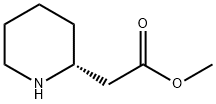
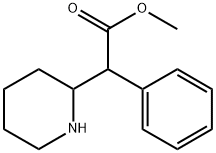



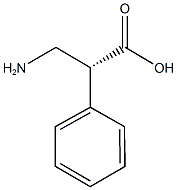
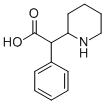
You may like
-
 2033-24-1 98%View Details
2033-24-1 98%View Details
2033-24-1 -
 1975-50-4 98%View Details
1975-50-4 98%View Details
1975-50-4 -
 2-HYDROXY BENZYL ALCOHOL 98%View Details
2-HYDROXY BENZYL ALCOHOL 98%View Details
90-01-7 -
 2-Chloro-1,3-Bis(Dimethylamino)Trimethinium Hexafluorophosphate 221615-75-4 98%View Details
2-Chloro-1,3-Bis(Dimethylamino)Trimethinium Hexafluorophosphate 221615-75-4 98%View Details
221615-75-4 -
 61397-56-6 CIS BROMO BENZOATE 98%View Details
61397-56-6 CIS BROMO BENZOATE 98%View Details
61397-56-6 -
 14714-50-2 (2-Hydroxyphenyl)acetonitrile 98+View Details
14714-50-2 (2-Hydroxyphenyl)acetonitrile 98+View Details
14714-50-2 -
 118753-70-1 98+View Details
118753-70-1 98+View Details
118753-70-1 -
 733039-20-8 5-broMo-2-chloro-N-cyclopentylpyriMidin-4-aMine 98+View Details
733039-20-8 5-broMo-2-chloro-N-cyclopentylpyriMidin-4-aMine 98+View Details
733039-20-8